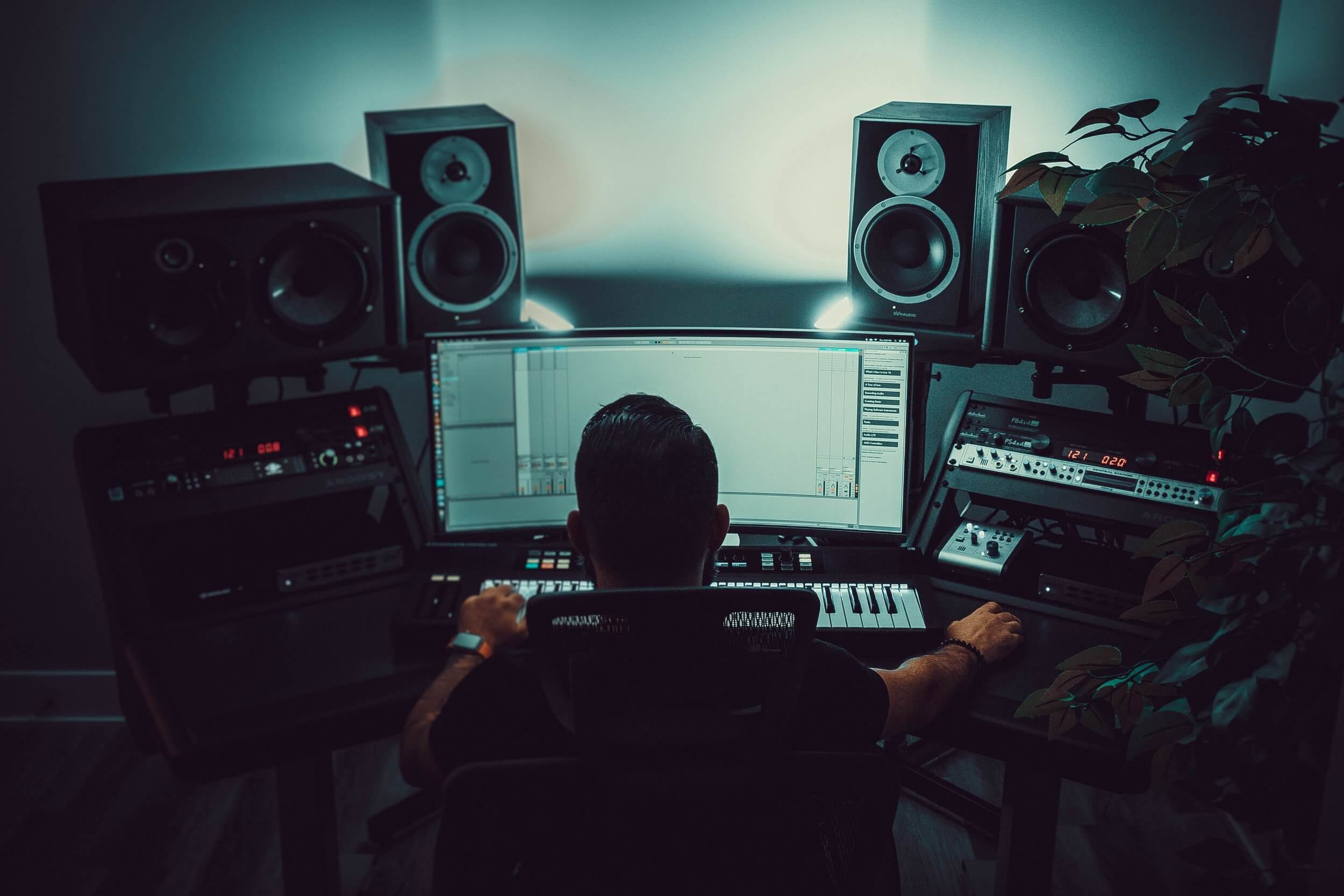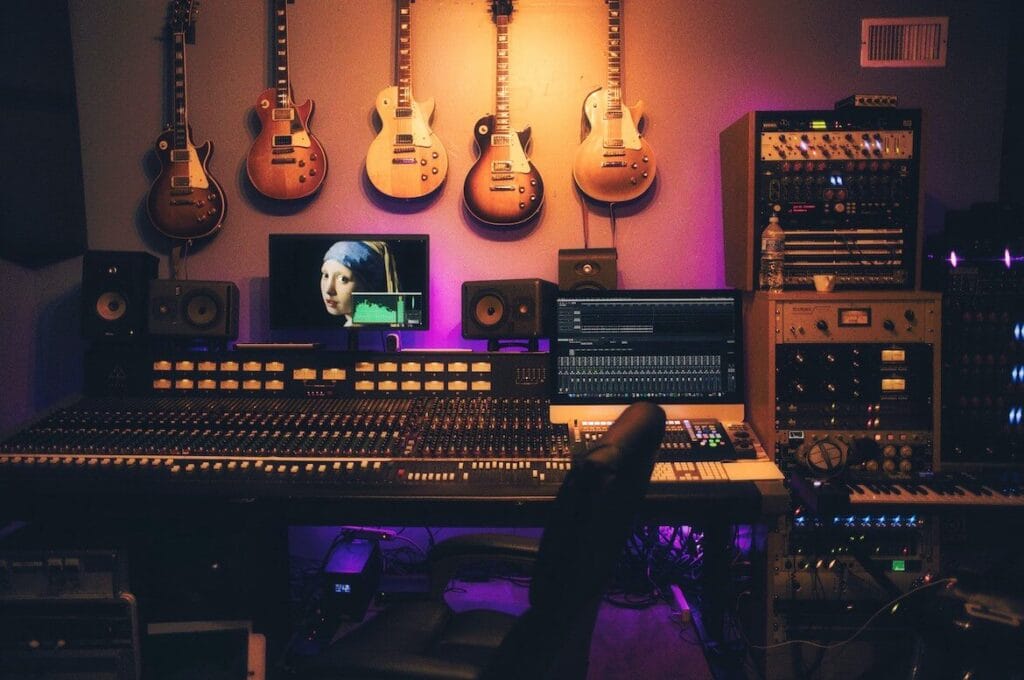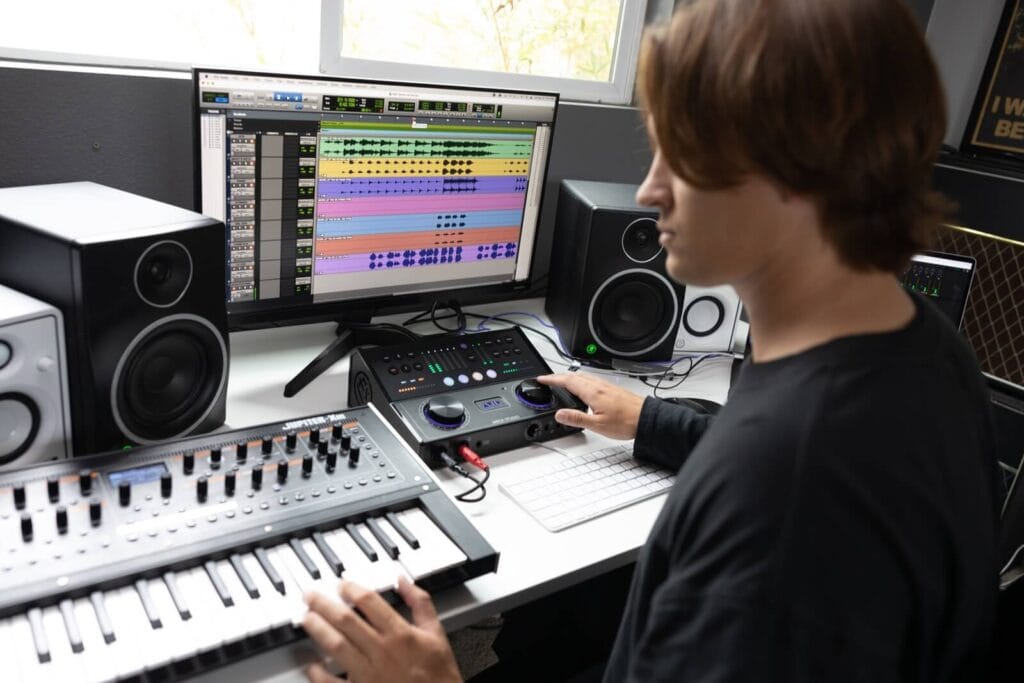Electronic music production is a creative and technical process that involves composing, arranging, mixing, and mastering music using digital tools and hardware.
Whether you’re interested in producing house, techno, hip-hop, or ambient soundscapes, understanding the fundamentals is crucial for crafting high-quality tracks.
In this guide, you’ll learn about electronic music production, from selecting the right gear to mastering your final mix.
Electronic Music Production: Essential Gear And Software
The right tools and software play a vital role in electronic music production. Whether you’re a beginner or an experienced producer, having the right equipment can make the process smoother and more efficient.
Essential Hardware for Music Production
- Digital Audio Workstation (DAW) – The heart of music production. Popular DAWs include Ableton Live, FL Studio, and Logic Pro.
- MIDI Controller – Helps you play melodies, control synths, and improve workflow.
- Audio Interface – Converts analog signals into digital, ensuring high-quality recordings.
- Studio Monitors – Provide accurate sound representation for precise mixing.
- Professional Headphones – Essential for detailed sound design and mixing in quieter environments.
Must-Have Software and Plugins
- Synthesizers – Plugins like Serum, Massive, and Sylenth1 allow you to create custom sounds.
- Drum Machines & Samplers – Tools like Maschine and Battery help build unique beats.
- Effects Plugins – Reverb, delay, and EQ tools enhance depth and clarity.
Investing in the right electronic music production gear helps streamline your workflow and improves your overall sound quality.
Understanding Sound Design And Effects In Music Production
Sound design is a fundamental part of electronic music production, allowing producers to create unique sounds that define their music.
Synthesizers and Sound Creation
- Oscillators – Generate waveforms (sine, saw, square) that form the foundation of sounds.
- Filters – Modify frequencies to shape the character of a sound.
- LFO (Low-Frequency Oscillators) – Add movement and modulation to synth patches.
Effects and Processing
- Reverb & Delay – Create space and depth in your mix.
- EQ & Compression – Balance frequencies and control dynamics.
- Distortion & Saturation – Add warmth and texture to digital sounds.
Mastering these techniques in electronic music production will help you craft professional and engaging tracks.
Building Rhythm And Melody: The Core Of Electronic Music
Creating compelling beats and melodies is at the heart of electronic music production. Understanding rhythm, groove, and harmony ensures your track is engaging and dynamic.
Programming Drums and Percussion
- Kick Drum – The driving force of many electronic music genres.
- Snare & Claps – Provide rhythm and character.
- Hi-Hats & Percussion – Add groove and movement to the track.
Melody and Harmony
- Basslines – Create depth and energy in the composition.
- Chord Progressions – Define the emotional tone of the track.
- Leads & Arpeggios – Bring melody to the forefront.
Well-structured electronic music production relies on rhythmic precision and melodic flow to keep listeners engaged.
Mixing And Mastering For Professional Quality Tracks
Proper mixing and mastering elevate electronic music production from amateur to professional quality.
Mixing Basics
- Balancing Levels – Ensuring each element sits well in the mix.
- EQ (Equalization) – Removing unwanted frequencies for clarity.
- Panning & Stereo Imaging – Spreading sounds for a fuller mix.
- Compression – Controlling dynamics and keeping elements balanced.
Mastering for Final Touches
- Loudness & Limiting – Adjusting volume for streaming platforms.
- Stereo Widening – Enhancing depth and spatial imaging.
- Final EQ Adjustments – Fine-tuning frequencies for a polished sound.
A properly mixed and mastered track ensures that your electronic music production sounds professional on all audio systems.
Common Mistakes In Electronic Music Production And How To Avoid Them
Even experienced producers make mistakes. Here are some common errors in electronic music production and how to fix them:
Typical Mistakes
- Overuse of Effects – Too much reverb or delay can muddy the mix.
- Poor Gain Staging – Levels should be balanced to avoid distortion.
- Weak Low-End Management – Bass and kick should complement each other, not clash.
Solutions
- Keep Effects Subtle – Use effects to enhance, not overpower.
- Maintain Proper Levels – Avoid clipping and distortion.
- Reference Professional Tracks – Compare your mix to well-produced songs.
Avoiding these pitfalls will significantly improve the quality of your electronic music production.
See you in the next post,
Anil UZUN


